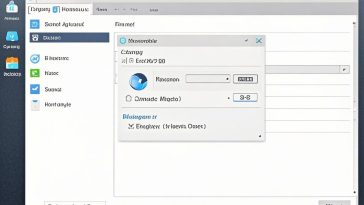Introduction
Multimedia elements like videos can greatly enhance the impact and engagement of your presentations. By incorporating relevant and captivating videos, you can better illustrate your points, provide real-world examples, and keep your audience engaged. YouTube, with its vast library of content, offers a convenient and accessible source of videos that you can seamlessly integrate into your PowerPoint presentations.
In this tutorial, we’ll explore two different methods to embed YouTube videos in PowerPoint, as well as various formatting options, performance optimizations, and best practices. Whether you’re creating a corporate presentation, an educational slideshow, or any other type of visual content, adding YouTube videos can take your PowerPoint game to the next level.
Setting Up the PowerPoint Slide
Before inserting a YouTube video, you’ll need to prepare the slide layout to accommodate the video player. Here are the steps:
- Create a new slide or navigate to an existing slide where you want to add the video.
- Adjust the slide layout to one that suits your needs. For example, the “Title and Content” layout provides a dedicated placeholder for the video, while the “Blank” layout gives you more flexibility in positioning the video.
- If using a layout with a placeholder, click on it and resize or reposition it as needed to make room for the video player.
Inserting the YouTube Video (Method 1: Embed Code)
One way to embed a YouTube video in PowerPoint is by using the video’s embed code. This method provides more customization options and allows you to control the video’s appearance and behavior directly within PowerPoint. Here’s how to do it:
- Open the YouTube video you want to embed and copy the video URL from your browser’s address bar.
- In PowerPoint, navigate to the “Developer” tab (if not visible, you may need to enable it from the “File” > “Options” > “Customize Ribbon” menu).
- Click the “More Controls” button in the “Controls” group, and select the “Shockwave Flash Object” option from the list.
- A dialog box will appear. Paste the YouTube video URL into the “Movie” field, and click “OK.”
- The video player will be inserted onto your slide. You can resize and reposition it as needed.
- To adjust the video’s properties, such as autostart, loop, or display controls, right-click on the video and select “Properties.”
Inserting the YouTube Video (Method 2: Online Video)
PowerPoint also offers a built-in feature to insert online videos, including those from YouTube. This method is generally more straightforward but may have fewer customization options. Follow these steps:
- In PowerPoint, navigate to the “Insert” tab and click the “Online Video” button in the “Media” group.
- In the “Online Video” dialog box, paste the YouTube video URL into the “From a Video Embed Code” field.
- PowerPoint will automatically generate a preview of the video. Click the “Insert” button to add the video to your slide.
- You can resize and reposition the video player as needed.
- To customize the video’s appearance and playback settings, right-click on the video and select “Format Online Video.”
Formatting and Styling the Video
Once the YouTube video is inserted, you can further enhance its appearance and behavior by applying various formatting and styling options:
- Use the “Format” tab (or right-click on the video and select “Format Video”) to access the video formatting options.
- Apply video styles, such as borders, shadows, and animations, to make the video player more visually appealing and attention-grabbing.
- Adjust the video display settings, such as “Fit to Slide” or “Full Screen,” to ensure the video is displayed correctly and optimally sized for your presentation.
- Add video controls (play, pause, seek) and captions to provide better control and accessibility for your audience.
Optimizing Video Performance
While embedding YouTube videos can enhance your presentations, it’s important to ensure smooth playback and optimal performance. Here are some tips to consider:
Compressing or Linking to the Video File: If you’re experiencing performance issues, you can try compressing the video file or linking to the online source instead of embedding it directly. This can help reduce file size and improve playback performance, especially on older or less powerful systems.
Embedding vs. Linking to Online Sources: Embedding the video directly into your PowerPoint file can make the file larger and potentially cause playback issues, especially if the video is high-resolution or lengthy. Linking to the online source can improve performance but requires an internet connection during playback.
Testing Video Playback: Before delivering your presentation, it’s crucial to test video playback on different systems and devices to ensure compatibility and smooth performance. PowerPoint’s behavior may vary depending on the operating system, hardware, and software configurations.
Advanced Tips and Tricks
To take your PowerPoint video integration to the next level, consider these advanced tips and tricks:
Triggering Video Playback: Use PowerPoint’s animation and transition features to trigger video playback at specific points during your presentation or upon clicking an object or button.
Video Bookmarks and Navigation: Create bookmarks or navigate to specific timestamps within the video, allowing you to jump to relevant sections or skip ahead as needed.
Interactive Elements: Integrate interactive elements, such as quizzes, polls, or clickable hotspots, with the video to enhance audience engagement and retention.
Third-Party Add-Ins: Explore third-party PowerPoint add-ins and tools that offer enhanced video capabilities, such as advanced playback controls, annotation tools, or video editing features.
Best Practices and Considerations
While integrating YouTube videos can greatly enhance your presentations, it’s important to follow best practices and consider potential limitations or considerations:
Relevance and Alignment: Ensure that the videos you include are relevant to your presentation content and aligned with your overall message or objectives.
Copyright and Licensing: Respect copyright and licensing guidelines when using YouTube videos in your presentations, especially for commercial or public use.
Accessibility: Provide alternative content or transcripts for individuals with hearing or visual impairments to ensure accessibility and inclusivity.
Troubleshooting: Be prepared to troubleshoot and address any video playback issues that may arise during your presentation, such as buffering, audio/video sync problems, or compatibility issues.
Conclusion
Incorporating YouTube videos into your PowerPoint presentations can add a dynamic and engaging element that captivates your audience and reinforces your message. By following the steps outlined in this tutorial, you can seamlessly embed YouTube videos, format them to your liking, optimize performance, and explore advanced techniques for enhanced interactivity.
Don’t be afraid to experiment with different video integration methods, formatting options, and interactive elements. With a little creativity and practice, you can elevate your PowerPoint presentations and deliver a truly multimedia experience that leaves a lasting impression on your audience.
We’d love to hear about your experiences using YouTube videos in PowerPoint. Share your tips, tricks, and creations in the comments section below!






